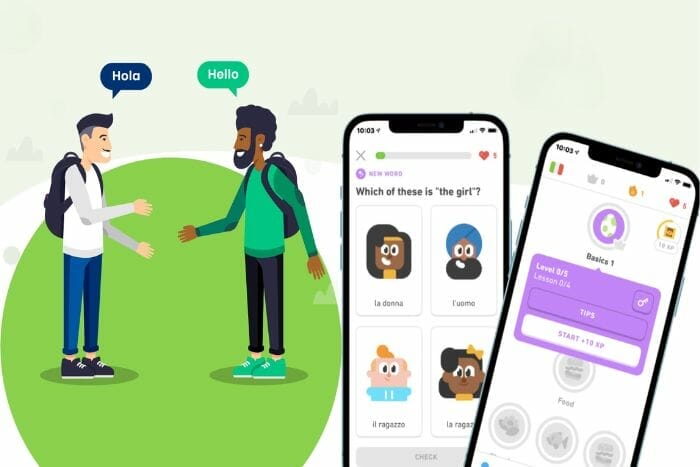How to Use Chatbots to Improve Customer Service

In today’s digital age, customer service has undergone a remarkable transformation. Businesses are constantly seeking innovative ways to enhance their customer support processes, and one such innovation that has gained immense popularity is the use of AI chatbots. These artificial intelligence-driven bots offer a range of benefits, from 24/7 availability to increased efficiency. In this comprehensive guide, we will explore how chatbots help to improve customer experience, ensuring better customer care and boosting your business’s success.
Understanding the Role of Chatbots
Before diving into how to use chatbots effectively for customer satisfaction, it’s crucial to understand their role and potential. Chatbots can help computer programs designed to simulate human conversation and customer queries to make a customer journey successful. Digital Delane uses natural language processing (NLP) and machine learning algorithms to understand and respond to customer inquiries in a human-like manner.


Nowadays, Google Brad and Chatgpt are a few of the famous chatbots. So, you can choose the suitable chatbots that are better for your business from a chatbot or Google Brad. Chatbots can be deployed across various digital platforms, including websites, mobile apps, and messaging platforms. They serve several essential functions in customer service:
24/7 Availability
Chatbots don’t need sleep or breaks. They can assist customers at any time of day or night, ensuring round-the-clock support.
Instant Responses
Customers often appreciate quick answers to their questions. Chatbots excel at providing instant responses, reducing waiting times and frustration.
Do you want to grow faster? Schedule a free consultation call with an expert
Consistency


Chatbots deliver consistent and accurate information every time. This eliminates the risk of human error and ensures uniform service quality.
Scalability
Chatbots can handle increasing inquiries and create scalability and high performance without additional staffing as your business grows, making them a cost-effective solution.
Data Collection
Chatbots can gather valuable customer data during interactions, helping businesses understand their audience better and improve their products and services.
Implementing Chatbots in Customer Service
Now that we understand the benefits of chatbots let’s explore how to implement them effectively in your customer service strategy:
Identify Use Cases
Digital Delane identifies specific use cases for chatbots within your customer service operations. Everyday use cases include answering frequently asked questions, guiding users through troubleshooting processes, and collecting customer feedback.
Choose the Right Platform


Select a platform or channels to deploy your chatbots. Depending on where your customers are most active, this could be your website, mobile app, or messaging apps like WhatsApp or Facebook Messenger.
Design Conversational Flows
Design conversational flows that align with your identified use cases. Map out the dialogue trees and possible user interactions to ensure a smooth user experience.
Integrate with Existing Systems
Ensure your chatbots are integrated with your customer relationship management (CRM) system and other relevant databases. This integration allows chatbots to access customer information and provide personalized support.
Test and Refine
Before deploying chatbots to the public, thoroughly test them to identify and resolve any issues or inaccuracies. Continuously monitor their performance and gather user feedback for further refinement.
Enhancing User Experience


To truly improve customer service with chatbots, enhancing the user experience is essential. Here are some tips to achieve this:
Provide a Human Touch
While chatbots are automated, they can still be programmed to convey empathy and a human touch in their interactions. Digital Delane uses a conversational and friendly tone in your bot’s responses.
Offer Seamless Escalation
For complex issues that chatbots can’t resolve, ensure a seamless escalation process to connect users with human agents. This prevents frustration and ensures that customer issues are addressed adequately.
Personalization
Leverage customer data to personalize interactions. Address users by name, offer product recommendations based on their preferences, and tailor responses to their previous interactions.
Multi-Language Support


If your business operates in multiple regions or serves a diverse customer base, provide chatbots that support multiple languages. This improves accessibility and customer satisfaction.
Measuring Chatbot Performance
To gauge the effectiveness of your chatbots in improving customer service, you need to establish key performance indicators (KPIs) and continuously monitor their performance. Some relevant KPIs include:
Response Time
Measure how quickly chatbots respond to customer inquiries. Faster response times often lead to higher customer satisfaction.
Resolution Rate
Track the percentage of issues resolved by chatbots without human intervention. A high resolution rate indicates effective problem-solving.
Customer Satisfaction (CSAT) Score


Collect customer feedback about their chatbot interactions. Use Customer Satisfaction CSAT scores to gauge user satisfaction and identify areas for improvement.
Conversion Rate
Monitor their contribution to conversion rates if your chatbots are involved in sales or lead generation. This helps determine their impact on revenue.
Evolving with Customer Needs
Customer needs and preferences evolve, so your chatbot strategy should adapt accordingly. Regularly review and update your chatbot’s capabilities to align with changing customer expectations and technological advancements. Digital Delane provides more proactive support, consider implementing new features such as voice recognition, chatbot integrations with social media marketing platforms, or AI-driven predictive analytics.
The Future of Chatbots in Customer Service
As technology advances, the future of chatbots in customer service holds even more exciting possibilities. Here are some trends to watch out for:
Advanced Natural Language Processing (NLP)


Chatbots will become even more proficient in understanding and responding to natural language. They can handle complex inquiries and engage in more natural conversations with users.
Integration with Voice Assistants
Chatbots will integrate seamlessly with voice assistants like Amazon’s Alexa and Google Assistant. Users can interact with chatbots using voice commands, further enhancing convenience.
Predictive Analytics
Chatbots will use predictive analytics to anticipate customer needs. They will proactively offer assistance or solutions before customers ask for help, enhancing the overall customer experience.
Emotional Intelligence
Chatbots will be equipped with emotional intelligence to detect and respond to user emotions. They can provide empathetic responses and offer support during emotional or stressful situations.
Enhanced Security
With the increasing importance of data security, chatbots will have robust security features to protect customer information and ensure secure transactions.
Integration with Augmented Reality (AR) and Virtual Reality (VR)


Chatbots may extend their capabilities to AR and VR environments, providing users with immersive and interactive experiences for troubleshooting or product demonstrations.
Industry-Specific Solutions
Chatbots will become more specialized in various industry specifications, offering tailored solutions for healthcare, finance, e-commerce, and more. These industry-specific chatbots will have a deep understanding of sector-specific terminology and regulations.
Case Studies: Successful Chatbot Implementations
Let’s examine a few real-world examples of companies that have successfully implemented chatbots to improve customer service:
Bank of America’s Erica
Bank of America’s chatbot, Erica, assists customers with various banking tasks, from checking balances to setting up savings goals. Erica uses AI to analyze customers’ spending habits and offers financial advice. Since its launch, Erica has helped millions of customers manage their finances more effectively.
H&M’s Virtual Assistant
H&M’s virtual assistant helps customers find the perfect outfit. Users can describe what they’re looking for, and the chatbot suggests clothing items based on their preferences. This has significantly improved the online shopping experience and increased sales for H&M.
Sephora’s Virtual Artist
Sephora’s chatbot, Virtual Artist, allows customers to try on makeup virtually. Users can upload a selfie, and the chatbot applies different makeup products to their photos, helping them choose the right products. This has boosted sales and provided an engaging and interactive experience for customers.
Duolingo’s Language Learning Chatbots


Duolingo uses chatbots to help users learn new languages. These chatbots engage users in conversations in the language they’re learning, providing valuable practice and feedback. This approach has made language learning more enjoyable and effective for millions of Duolingo users.
Ready to Discuss Your Project? Chat With Our Marketing Team
Chatbots and Omnichannel Customer Support
As customer service becomes more omnichannel, chatbots play a crucial role in providing seamless support across various touchpoints. Here’s how chatbots fit into the omnichannel customer support landscape:
Consistency Across Channels
Chatbots ensure that customers receive consistent information and support whether they interact through a website, mobile app, social media, or messaging platforms. This consistency enhances the overall customer experience.
Integration with Live Chat
Chatbots can work alongside human agents in live chat scenarios. They can handle routine inquiries and gather initial customer information before transferring the conversation to a human agent for more complex issues. This collaboration improves efficiency and customer satisfaction.


Chatbots can be deployed on social media platforms to engage with customers, answer questions, and provide support. They can also collect valuable customer data from social media interactions to inform marketing strategies.
Seamless Handovers
Chatbots should be designed to facilitate seamless handovers between channels. For example, if a customer starts a conversation on your website and then switches to Facebook Messenger, the chatbot should retain the conversation history and context to provide a smooth transition.
Best Practices for Chatbot Implementation
To ensure the success of your chatbot implementation, consider these best practices:
Clear Purpose and Goals
Define a clear purpose for your chatbot and set specific goals for what you want to achieve. Are you using it for customer support, sales, or lead generation? Understanding its role is essential.
Comprehensive Training Data
Train your chatbot with a robust dataset that includes a wide range of user inquiries and responses. Continuously update and refine this dataset to improve performance.
Human Oversight


While chatbots can handle many tasks, they should have human oversight, especially in complex or sensitive situations. Ensure a seamless transition to human agents when needed.
User-Friendly Design
Design your chatbot’s user interface to be intuitive and user-friendly. Users should easily understand how to interact with it and get the necessary information.
Regular Updates
Keep your chatbot up-to-date with the latest information, product details, and FAQs. An outdated chatbot can frustrate users and lead to misinformation.
Data Privacy and Security
Prioritize data privacy and security. Communicate how user data will be used and ensure compliance with data protection regulations.
The Ethical Considerations of Chatbots


As chatbots become more integrated into customer service, ethical considerations become increasingly important. Here are some ethical considerations to keep in mind:
Transparency
Be transparent with users about the use of chatbots. Indicate when interacting with a chatbot and when a human agent takes over.
Data Privacy
Safeguard user data and ensure that it is not misused. Only collect data necessary for providing support and seek user consent when required.
Bias and Fairness
Regularly audit your chatbot’s responses to ensure they are free from bias and discrimination. Train your chatbot to provide fair and equitable support to all users.
Accessibility
Ensure that your chatbot is accessible to users with disabilities. It should be compatible with screen readers and other assistive technologies.
The Cost-Benefit Analysis of Chatbots


Implementing chatbots in your customer service strategy involves development, training, and maintenance costs. However, the benefits often outweigh the costs. Conducting a cost-benefit analysis can help you decide about chatbot implementation. Consider factors such as:
Cost Savings
Calculate the cost savings achieved by reducing the need for additional human agents. Chatbots can handle a high volume of inquiries at a lower cost.
Increased Revenue
Assess the impact of chatbots on revenue generation, especially if they are involved in sales or lead generation.
Customer Satisfaction
Measure improvements in customer satisfaction and loyalty resulting from chatbot-driven support.
Efficiency
Determine how chatbots have improved the efficiency of your customer service operations, including response times and issue resolution.
Scalability
Consider how chatbots have facilitated scalability as your business grows.
The Role of Human Agents in a Chatbot-Driven Environment


While chatbots can handle many customer inquiries effectively, human agents remain essential to the customer service equation. Here’s how human agents fit into a chatbot-driven environment:
Complex Issues
Human agents are crucial for handling complex issues that require critical thinking, empathy, and nuanced decision-making. Chatbots can identify such problems and seamlessly escalate them to human agents.
Emotional Support
In emotionally charged situations, human agents provide the empathy and understanding that chatbots cannot replicate. They offer a human touch that is vital for customer satisfaction.
Continuous Improvement
Human agents play a chatbot role in training and improving chatbots. They provide feedback, identify areas for enhancement, and ensure that chatbots align with evolving customer needs.
Handling Exceptions
Human agents handle exceptional cases that fall outside the capabilities of chatbots. They have the flexibility to adapt to unique and unforeseen situations.
Chatbots and Multilingual Support


As businesses expand globally, providing multilingual support becomes increasingly important. Chatbots can play a significant role in offering help in multiple languages. Here’s how to implement multilingual chatbots effectively:
Language Detection
Implement language detection capabilities in your chatbot to automatically identify the user’s language preference.
Multilingual Content
Ensure that your chatbot can provide information and support in multiple languages. Translate FAQs, responses, and content to accommodate diverse customers.
Localized Knowledge
Tailor your chatbot’s knowledge to specific regions or markets. This includes understanding regional terminology and addressing local concerns.
Cultural Sensitivity
Train your chatbot to be culturally sensitive and respectful of cultural differences. Avoid language or actions that could be perceived as offensive or insensitive.
Conclusion
Using chatbots to improve customer service is no longer a futuristic concept—it’s a present-day reality. With the right strategies, ethical considerations, and a Digital Delane focus on technology and the human touch, businesses can harness the power of chatbots to enhance customer experiences, increase efficiency, and drive success in an ever-evolving digital landscape. Embrace chatbots as a valuable tool in your customer service arsenal, and stay prepared for the exciting innovations in this dynamic field.




